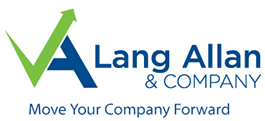The SECURE 2.0 Act aims to expand the ease of saving for retirement, simplify the management of retirement plans, and improve financial security for American workers and retirees. The updated law includes new options for 401(k) and 403(b) employer contributions, adjustments to the required minimum distribution age for IRAs, and increased catch-up contribution limits.
The act also has incentives to encourage employee enrollment.
However, these provisions may affect the amounts employers must report on Form W-2. The IRS has issued a fact sheet to clarify plan provisions and their impact on Form W-2. Among the specifics:
- Section 113 allows employers to offer de minimis (up to $250) financial incentives to employees who participate in retirement plans. The incentives cannot be paid from plan assets and are considered taxable income to the employee—in other words, they are subject to regular tax withholding.
- Under Section 601, Roth Savings Incentive Match Plan for Employees and Roth Simplified Employee Pension contributions are subject to federal income tax withholding, the Federal Insurance Contributions Act, and the Federal Unemployment Tax Act.
- Under Section 604, optional employer nonelective or matching Roth contributions are not subject to withholding for federal income tax, FICA, or FUTA.
Form Completion
Employee contributions to a Roth SEP or Roth Simple IRA are generally included on Form W-2 in boxes 1, 3, and 5. They are also reported in box 12 with code F (for a SEP) or code S (for a SIMPLE IRA).
When an employer makes matching or nonelective contributions to a Roth SEP, a Roth SIMPLE IRA, or designated Roth contributions to a qualified plan, the employer must report them on Form 1099-R for the year the contributions were made.
For Roth SEP or SIMPLE IRA contributions:
- Record the total amounts in boxes 1 and 2a.
- Use code 2 or 7 in box 7.
- Ensure the IRA/SEP/SIMPLE checkbox is selected.
- For designated Roth contributions to a qualified plan, use code G in box 7 to indicate the type of contribution.
Additional details can be found in IRS Notice 2024-2.
If you filed 2023 W-2 forms without following these new guidelines, you may need to file Form W-2C to correct errors. Consult with us if you have questions about past filings and staying compliant.
